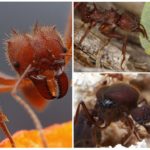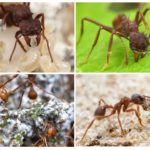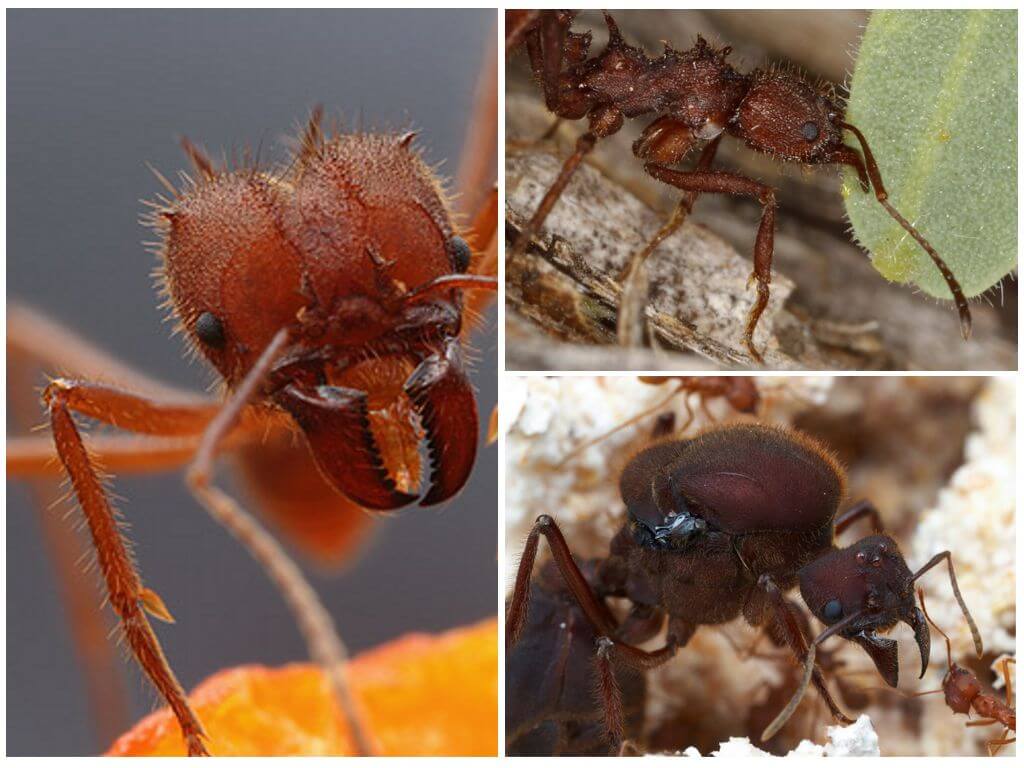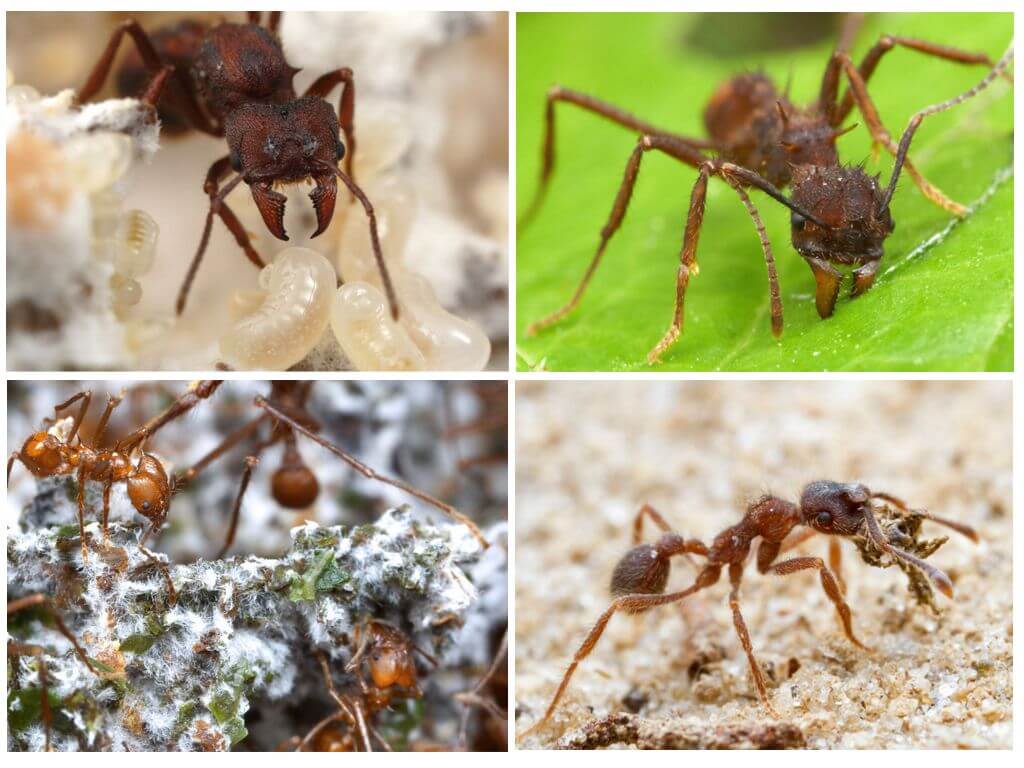Ants leaf cutters
- Ant leaf cutter
- Ant leaf cutter life
Ants leaf cutters - perhaps one of the most highly organized and developed groups, in many respects resembling large herbivores. So these insects were called because the basis of their food is leaves. More precisely cut foliage ants used as raw material for the production of formic "Kohlrabi". This article will tell you about this amazing and complex process, as well as the features of the ant leaf cutter itself.
How leaf cutters look
Ant leaf cutter - small brown insect. The length of its body varies in the range of 0.5-2 cm, depending on which caste an individual belongs to. In total, there are 7 castes in the leaf cutter: the uterus and the males, the soldiers and foragers, the builders and gardeners, and also the small workers.
- Workers who care about their future offspring and working on mushroom beds grow no more than 0.5 cm.
- Much bigger than the workers are ants defenders or soldiers, whose length is 1.5-2 cm. The formidable look is attached to a big head with powerful hooked jaws, thanks to which insects cut off the coarse foliage of tropical plants. After all, ants leaf cutters live in Central and South America.
- Deserves special attention queen wombwhose mass is several hundred times the weight of the working individual. Another distinctive feature of this female is a very large and powerful chest. Before the mating process, the uterus is a winged specimen, after fertilization, it loses wings, biting them off. From this point on, she is engaged only in reproducing offspring and organizing a new family.
Ants leaf cutters are owners of three pairs of long legs, the size of which depends on the "position". In individuals frequently moving through trees, limbs are the longest.
Lifestyle
Ant hard worker, this phrase applies to leaf cutters. To feed their colony, ants need to make a lot of effort. Having climbed a tree, the insect clasps the leaf plate with its limbs, after which it begins to cut the pieces of the leaf with its mandibles. Squeezing cargo, the ant goes back to the nest.
The cut leaves are processed by a special caste of insects. As a result, the thoroughly chewed coarse fiber turns into leafy gruel, richly flavored with ant enzymes contained in the saliva.
Interesting!
An antibiotic is present in the saliva of leaf cutters, which promotes the growth of pathogenic microorganisms in mushroom beds.
The resulting mass of insects folded in special chambers in which the necessary microclimate is maintained. The hardwood mixture is infected with a special mushroom and regularly fertilized.
After some time, the surface of the underground greenhouse is woven over with a mycelium, which looks like a sponge. At the initial stages of the development of fungi, ants gnaw them and throw them away. The resulting slice begins to actively secrete juice, which is a favorite delicacy of insects. After a while, these places harden and increase in size. They turn into a thick brush of transparent protein bodies, which is called "ant kohlrabi." It is this fungal culture that serves as food for the leaf cutter ants. For this reason, these insects are also called mushroom growers.
Anthill mushroom growers
Despite the fact that most of the life of the leaf cutter spend on trees, they build their nest in the underground layers of the soil. Only in such conditions, the fungi are not afraid of temperature changes and exposure to moisture.
The nest of leaf cutters resembles a large egg, in the heart of which the queen uterus lives. Around it are incubators with larvae and eggs. Next placed boxes with mycelium.
Interesting!
One anthill can occupy several meters, more than one million ant individuals can live in it.
Sometimes nomadic ants attack anthill mushrooms. Very often, after such attacks, there are no adults, no offspring, not even myceliums.
How leaf cutters multiply
Process breeding ants leaf cutter is similar to its fellows. With the advent of heat, the male and female fly out of the nest for mating. In order to accumulate the required amount of seed, the swarming female mates with several males. After that, she bites off her wings and begins to build a new colony. Ants life males on this ends.
A fertilized female digs a small depression where she lays eggs. There she folds pieces of leaves infected with mycelium. This substance is in a special pocket, located on the bottom of the head of the queen of the uterus. It is this component that serves as the beginning of the life of the leaf cutter ant farm.
Eyeless and legless larvae that appeared after 1.5 months are completely helpless, therefore only the female is engaged in their feeding. As food they are hyphae of fungi. The queen of leaf cutters during this period does not feed at all, she lives using her fat reserves.The queen uterus feeds exclusively the first offspring, subsequently working individuals do it. The uterus only lays eggs.
Interesting!
The sex composition of the ant population is carefully controlled by working individuals. The future of the larvae, who she will become, depends on the amount of food she consumes.
Females of the uterus and infertile females, who are subsequently labor, emerge from fertilized eggs. Males are hatching from ant eggs that are unfertilized.









